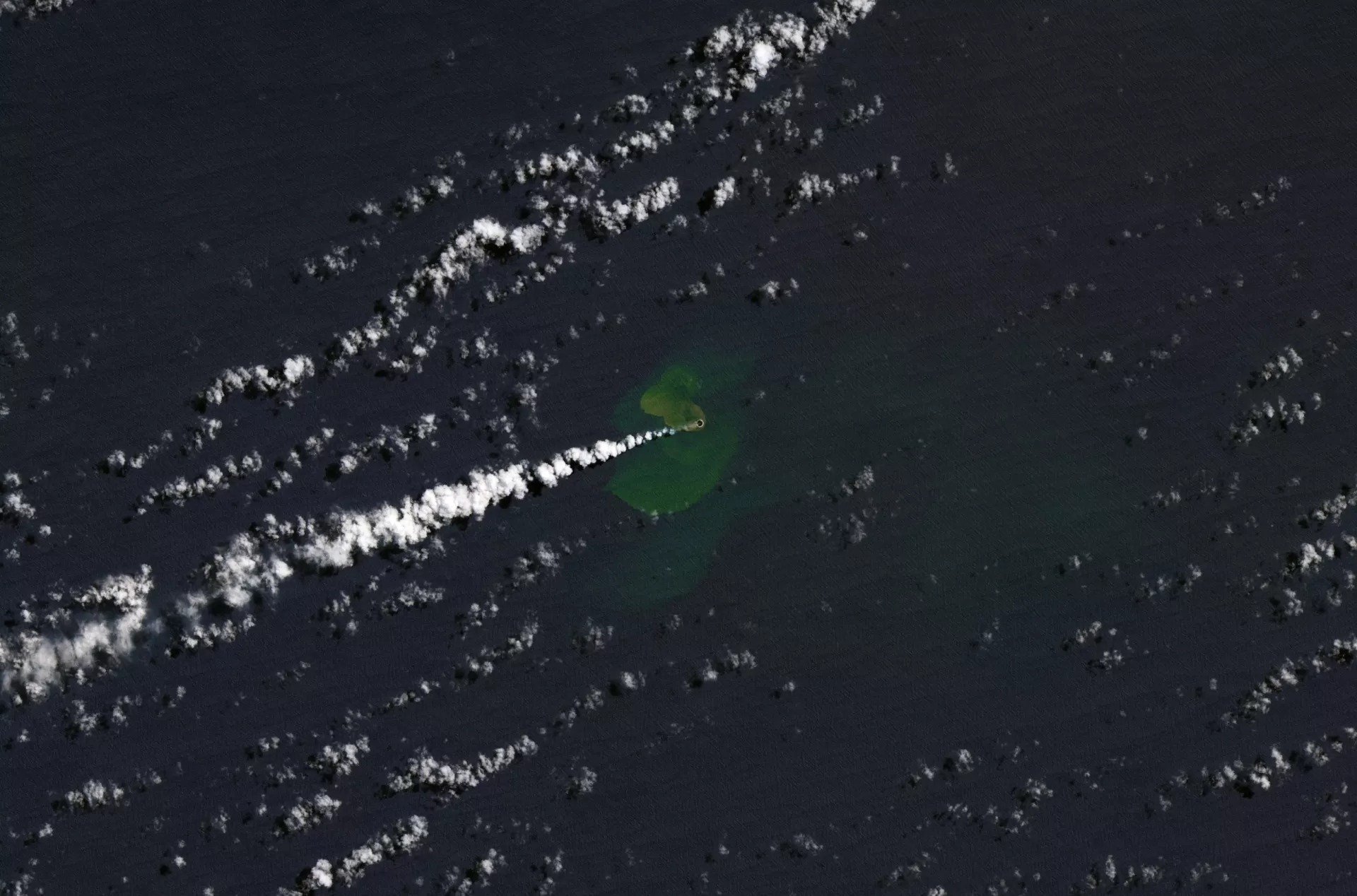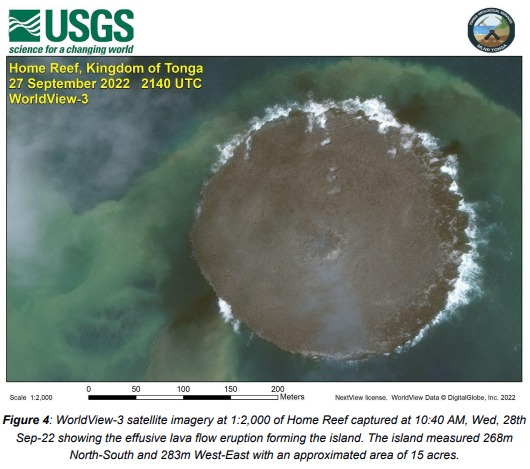
The Polynesian Kingdom of Tonga is home to a new island. The land mass results from the lava and ash spewed by the Home Reef seamount, an undersea volcano that came to life on September 10, 2022. While the volcano has been erupting steadily since, it poses no risk to the residents of the South Pacific archipelago.
The circular island began to form about 33 feet (10 meters) above sea level within just 11 hours of the initial eruption. The newly-formed land mass measured just one acre (about 4,000 square meters) on September 14, 2022. But recent satellite imagery from the US Geological Services indicates that the baby island now extends an impressive 6 acres (24,000 square meters)!

Before packing your bags, be warned that the emergent island is far from a tropical paradise. In fact, it is not even sturdy enough to walk upon yet. "It's more like a large layer of ash, steam, and pumice over the ocean," Rennie Vaiomounga, a geologist at the Tonga Geological Services, told the Washington Post.
NASA researchers do not believe the new island will be around for too long. Land masses from underwater eruptions typically get eroded by ocean waves and currents within a short period of time. However, there have been some exceptions. An island created by the 1995 eruption of the nearby Late'iki volcano lasted 25 years. Whether the newly-born Home Reef island will survive for that long remains to be seen.
Resources: NPR.com, Washingtonpost.com, earthobservatory.nasa.com, space.com
